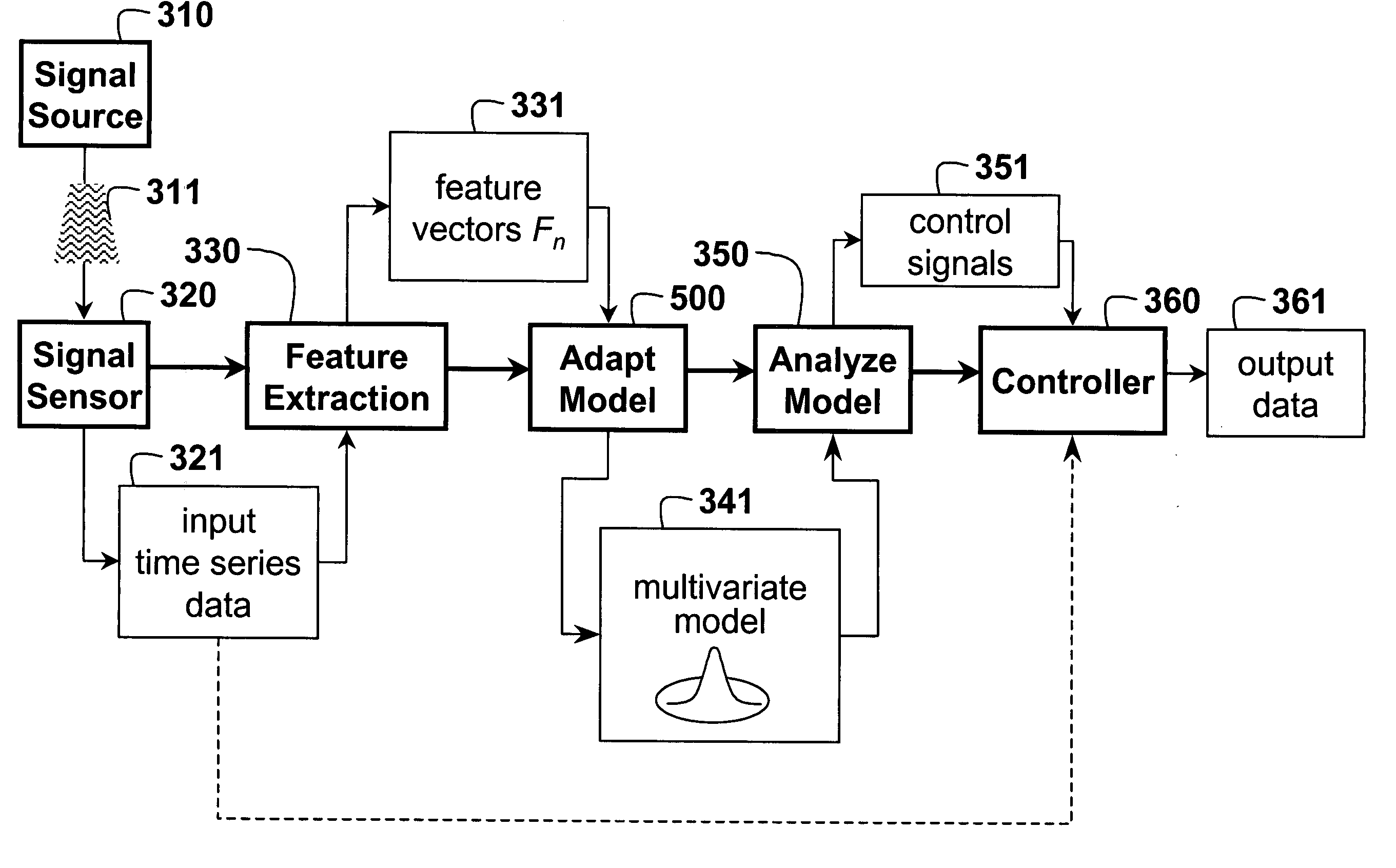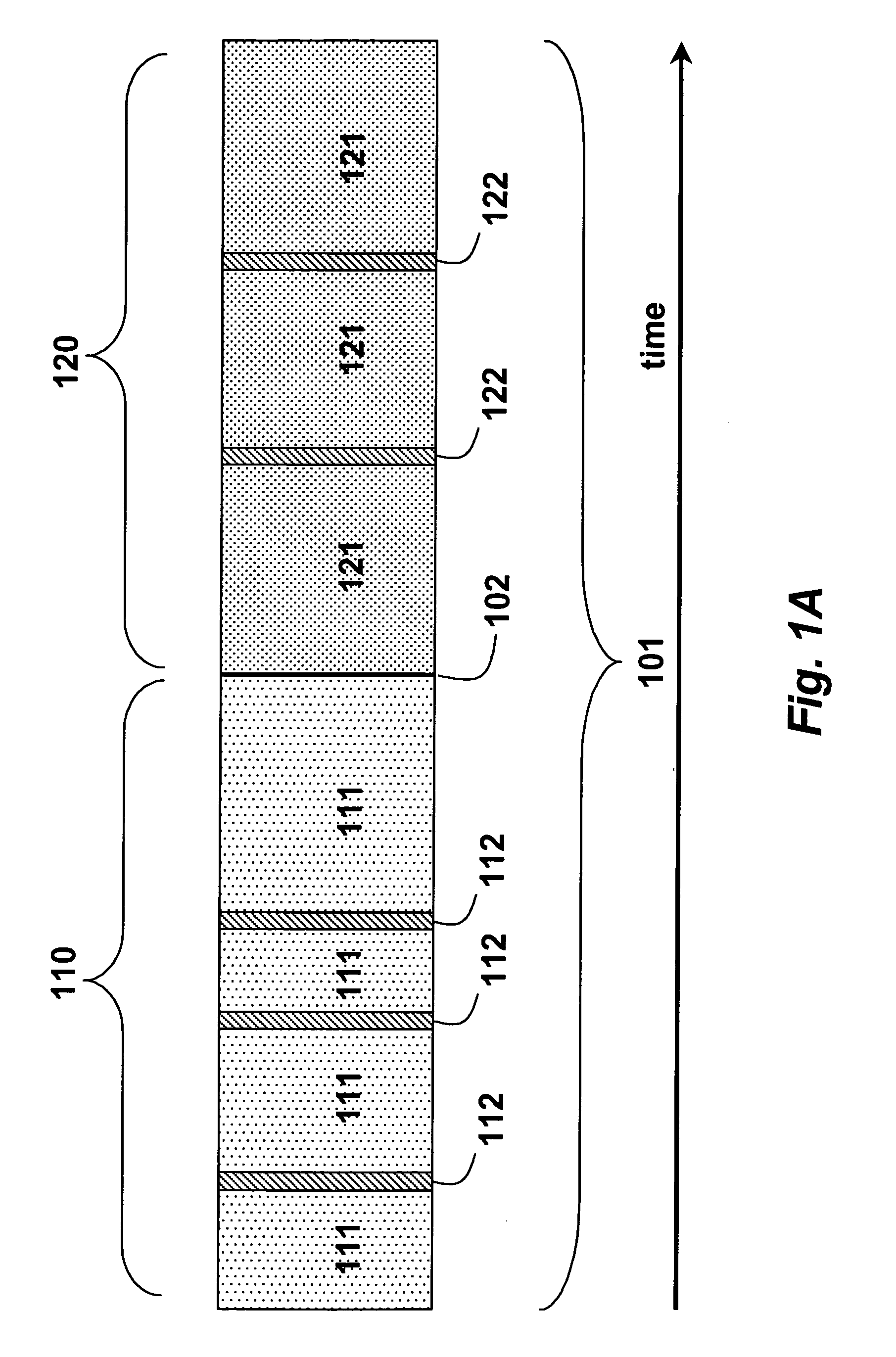Dynamic generative process modeling, tracking and analyzing
a dynamic generative process and time series technology, applied in the field of modeling, tracking and analyzing time series data, can solve the problems of large number of probabilistic models that are difficult to manage, method cannot be used for real-time applications, and high computational complexity of that method
- Summary
- Abstract
- Description
- Claims
- Application Information
AI Technical Summary
Problems solved by technology
Method used
Image
Examples
Embodiment Construction
[0018] The embodiments of our invention provide methods for tracking and analyzing dynamically a generative process that generates multivariate data.
[0019]FIG. 1A shows a time series of multivariate data 101 in the form of a broadcast signal. The time series data 101 includes programs 110 and 120, e.g., a sports program followed by a news program. Both programs are dominated by ‘normal’ data 111 and 121 with occasional short bursts of ‘abnormal’ data 112 and 122. It is desired to detect dynamically a boundary 102 between the two programs, without prior knowledge of the underlying generative process.
[0020]FIG. 1B shows a time series 150, where a regularly scheduled broadcast program 151 that is to be recorded is briefly interrupted by an unscheduled broadcast program 152 not to be recorded. Therefore, boundaries 102 are detected.
[0021]FIG. 2A shows another time series of multivariate data 201. The time series data 201 represents, e.g., a real-time surveillance signal. The time ser...
PUM
 Login to View More
Login to View More Abstract
Description
Claims
Application Information
 Login to View More
Login to View More - R&D
- Intellectual Property
- Life Sciences
- Materials
- Tech Scout
- Unparalleled Data Quality
- Higher Quality Content
- 60% Fewer Hallucinations
Browse by: Latest US Patents, China's latest patents, Technical Efficacy Thesaurus, Application Domain, Technology Topic, Popular Technical Reports.
© 2025 PatSnap. All rights reserved.Legal|Privacy policy|Modern Slavery Act Transparency Statement|Sitemap|About US| Contact US: help@patsnap.com



